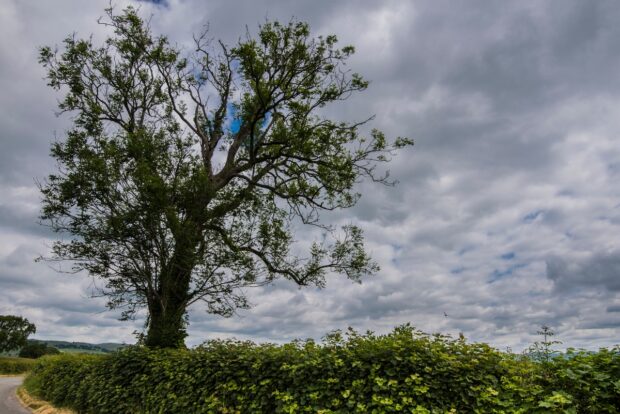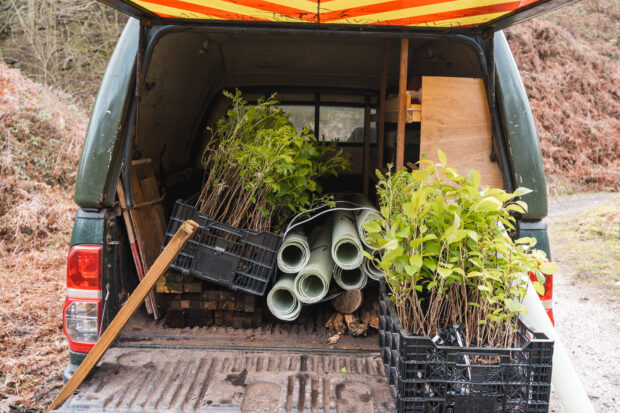Ash dieback (Hymenoscyphus fraxineus) is a serious fungal disease affecting ash trees. It was officially detected in the UK in 2012 and is now widespread. The fungus causes gradual crown dieback and can also attack the root collar of susceptible trees. A susceptible ash tree may take many or only a few years to eventually die depending on site conditions, as well as size and genetic make-up of the tree.
Ash trees are an important and significant tree in the landscape, both rural and urban. They provide valuable habitat for a range of wildlife both within woodlands and along corridors such as hedgerows and roadsides. Healthy trees are important to farm businesses and nature, providing shelterbelts, reducing run-off and soil erosion.

Some of these trees can pose a safety risk especially after storms and high winds which can result in damage to them, so it’s important that owners manage this risk particularly where they are close to busy roads or public areas. Managing the risk is the responsibility of the owner of the land on which they grow. If your tree or one of its branches causes harm or damage, you may be liable.
We understand that removing trees can be complicated and expensive. Contractors can be difficult to get, especially for unplanned work, and felling trees can be a sensitive issue locally. Collaboration isn’t always easy when there’s different ways of working, competing priorities and timescales, but we also know that local authorities want to help landowners take action.
What should you do if you’ve identified infected ash on your land?
Start planning if you haven’t already. Proactive and long-term management can help overcome some of the costs, challenges and reduce the risks.
Engage with other local landowners, farmers and organisations to share knowledge and expertise. There may be opportunities to save on costs related to surveys, road closures and contractors with specialist equipment and skills. Local markets may be available for the wood, firewood or chippings.
When surveying and inspecting, don't forget to check the root collar for signs of ash dieback or honey fungus attack. If appropriate, consider pruning or pollarding to remove dangerous branches, re-route a footpath and use warning signs to inform walkers.
Think long-term. Consider the opportunities to both retain and restock. Replanting where ash has needed to be felled and diversifying tree species across farmland and within hedges can help build long-term resilience to pest and diseases and a changing climate.

Your local Forestry Commission Woodland Officer or Resilience Officer can help with specific enquiries about ash dieback management, biodiversity, replanting, access to timber markets and clarify the need for Felling Licences and other permissions.
Key actions
- identify, monitor and assess the condition and safety of your trees
- act promptly to remove any tree that poses a danger to the public or infrastructure for example transport routes, public right of way or power lines
- partner and collaborate to help develop knowledge and facilitate a coordinated response
- mitigate loss: compensate for future loss of habitat by planting suitable species now and managing nearby trees and woodland to improve its condition
- manage: pruning or pollarding may be a suitable management option particularly where trees show tolerance to the disease. It also helps retain the landscape benefits the trees provide
Further support
You may be eligible for grant support for restocking through the Countryside Stewardship Woodland Tree Health grant and the Local Authority Treescapes Fund. In some areas grants to support collaborative activities and surveys are also available through the Tree Health Pilot.
Grants and other incentives for woodland creation are also available, and your local authority may be able to advise and have schemes you can sign up to.
You can find further information on ash dieback and what to do on our Managing Ash Dieback in England page, from the Tree Council, Forest Research and the Arboricultural Association's practice note.
You can also watch How to spot the signs and symptoms of ash dieback on our YouTube channel.


